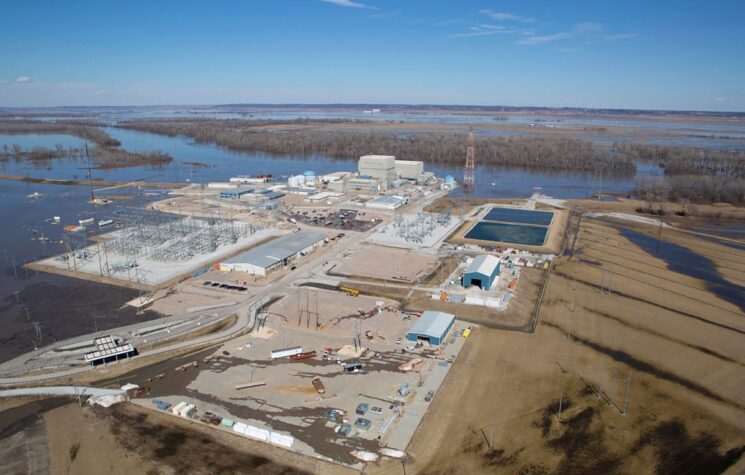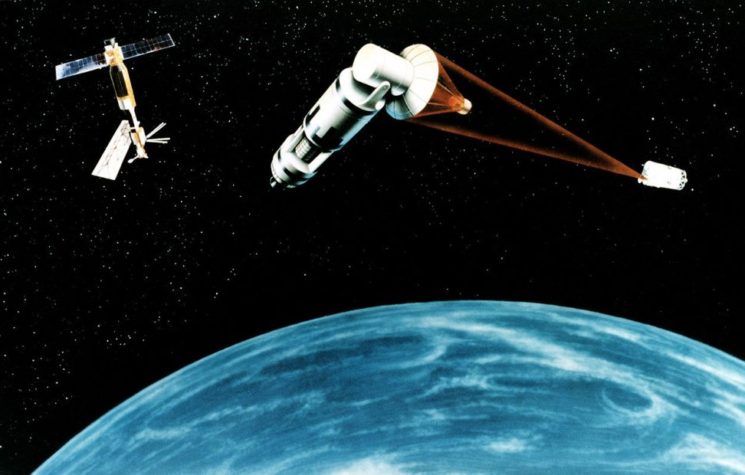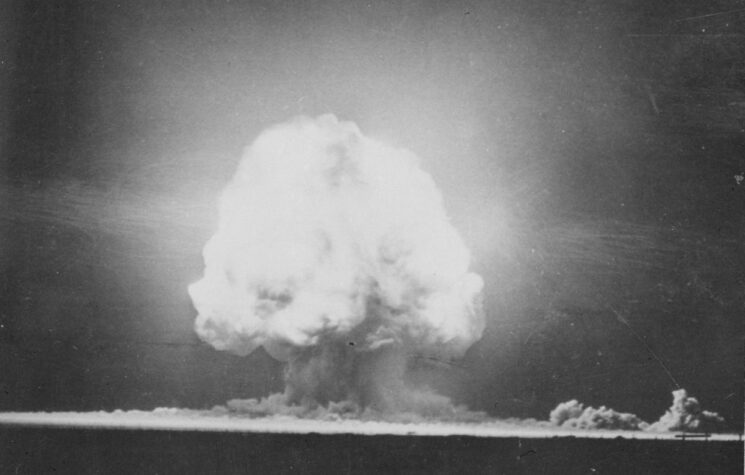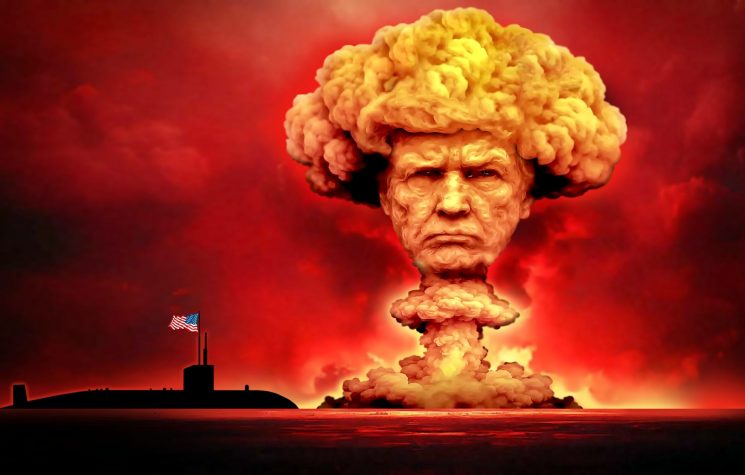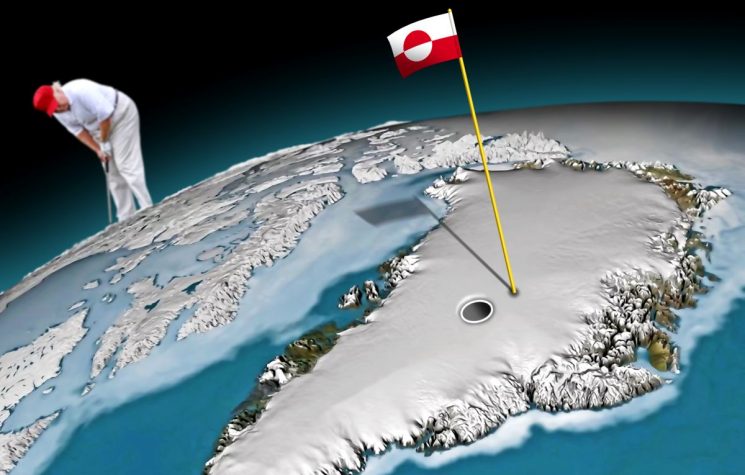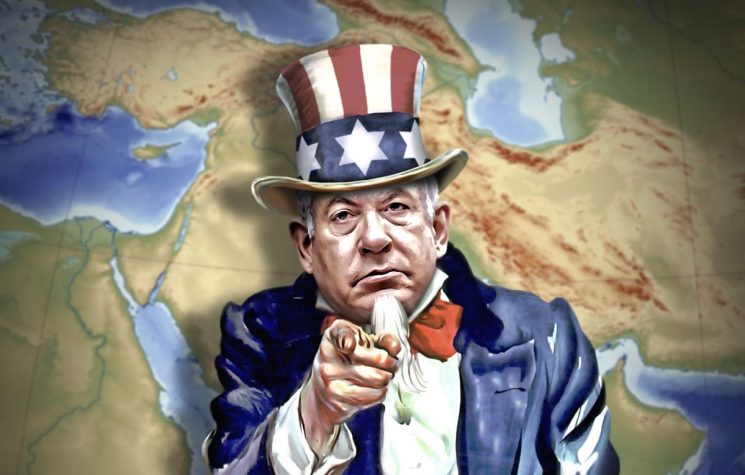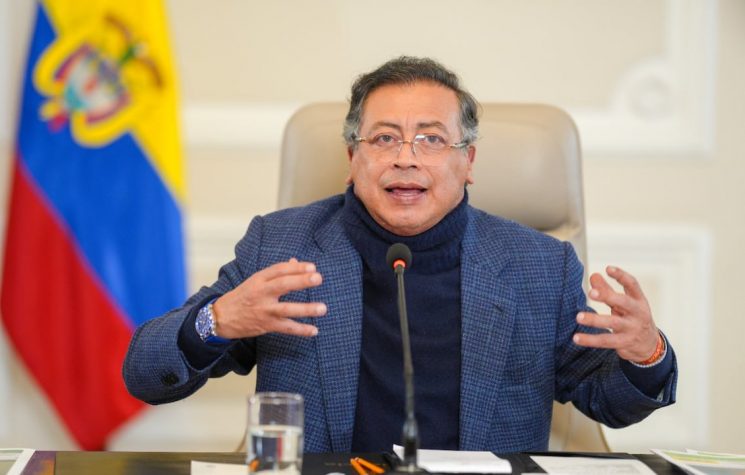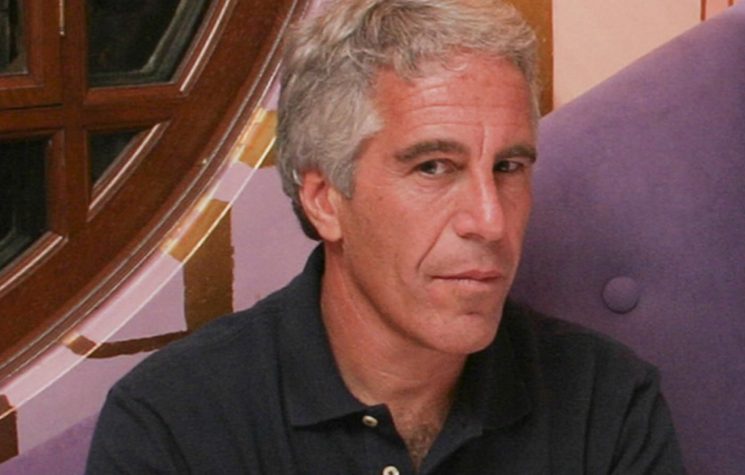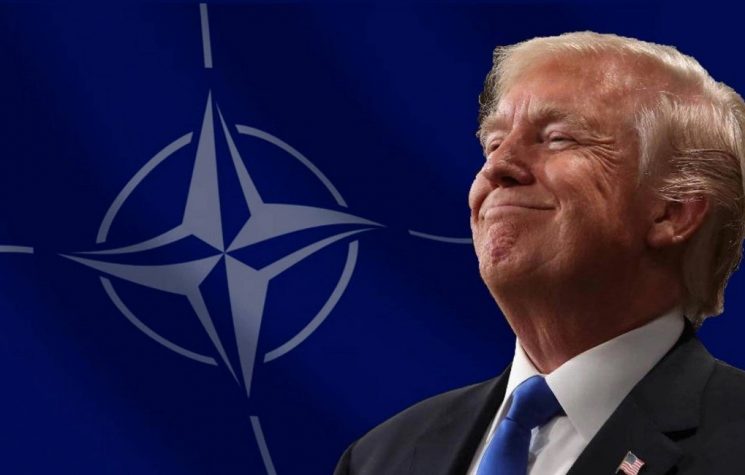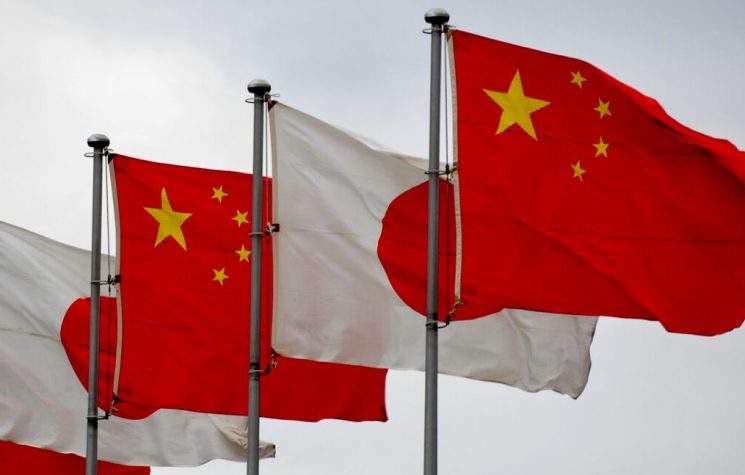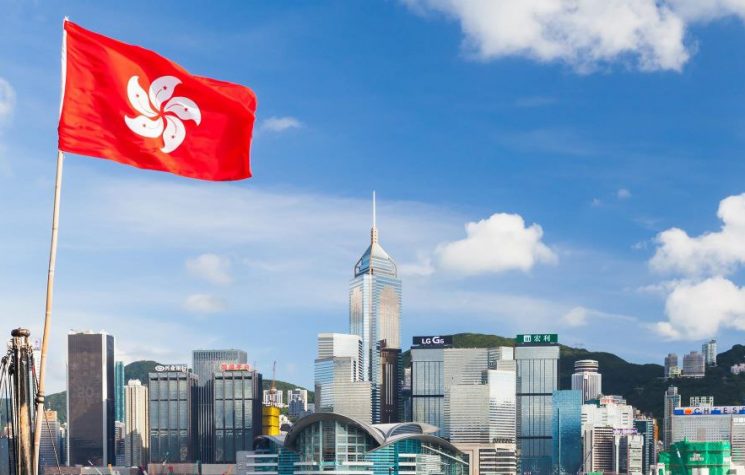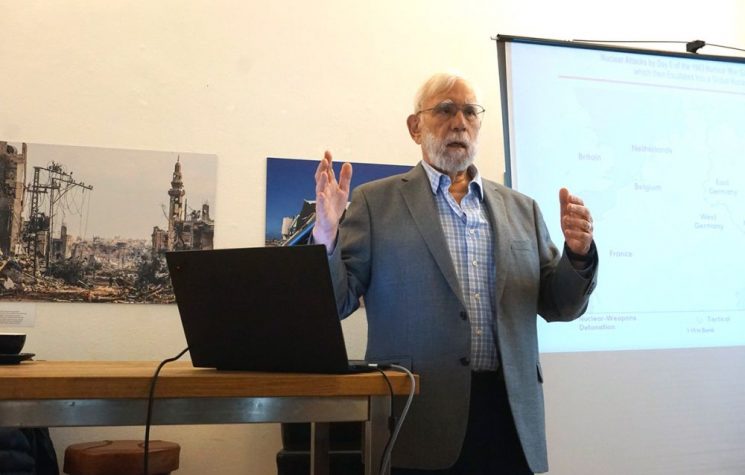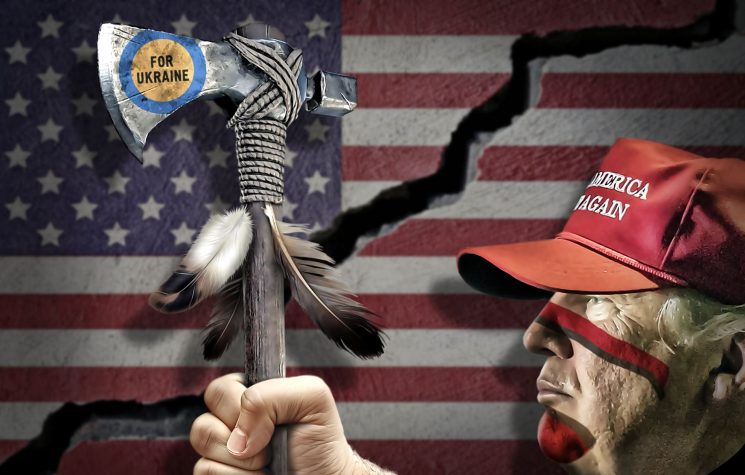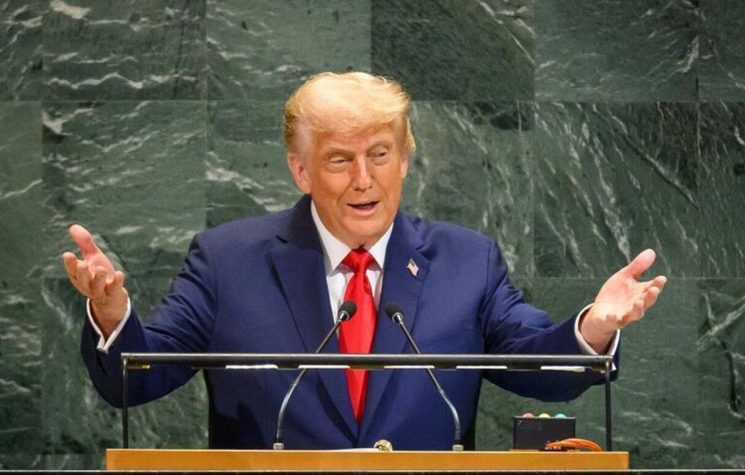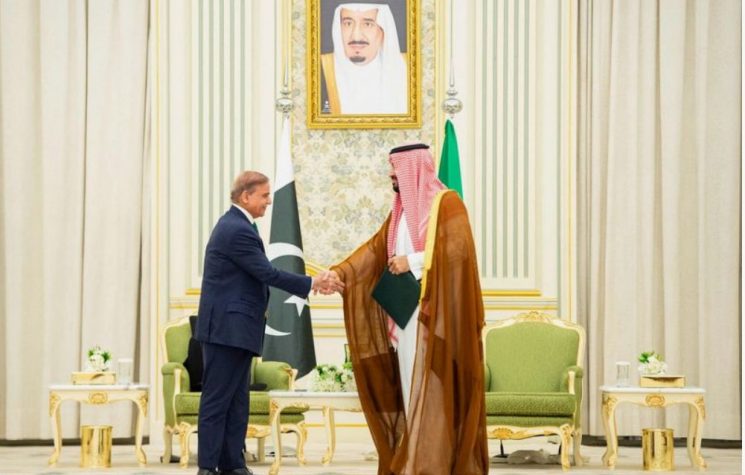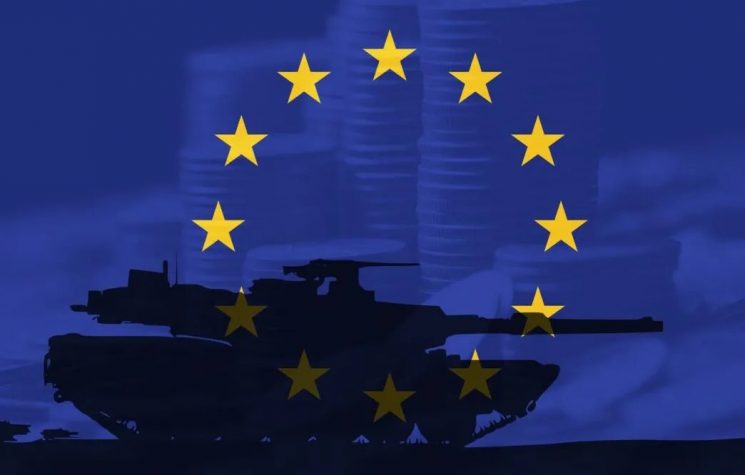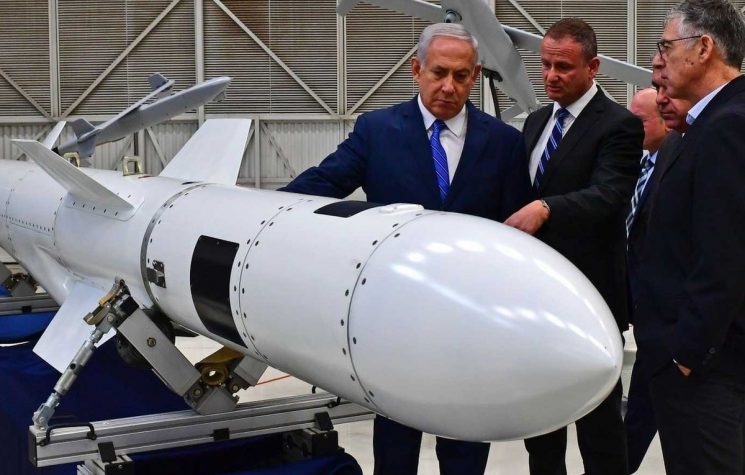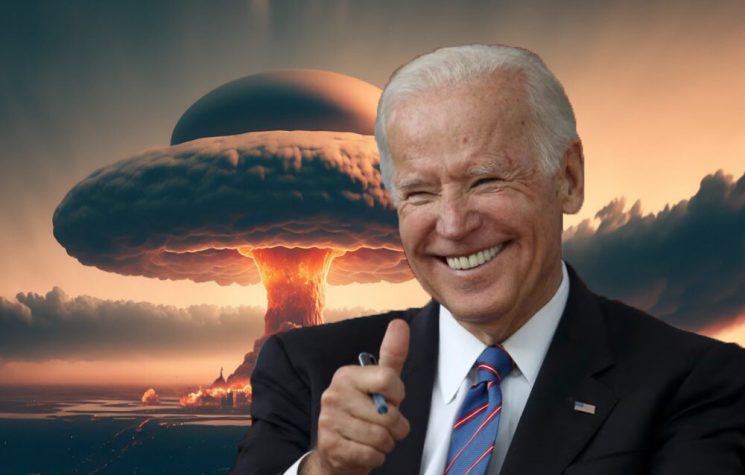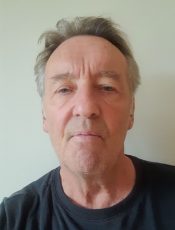The U.S. is pushing the world to the brink of catastrophe. Everything it says about China is self-projection of its own criminal malignancy, says Prof. Karl Grossman in his interview for the Strategic Culture Foundation.
In an astounding feat of double-think, the United States is accusing China of expanding its nuclear arsenal. As Karl Grossman points out in the following interview, China is increasingly being surrounded by U.S. military installations and missiles across the Pacific region – and is the party that is actively being threatened. In a recent editorial, we detailed how Beijing is also subjected to relentless hostile rhetoric as the U.S. and its allies ramp up a reckless aggressive agenda towards China.
China has a fraction of the nuclear arsenal possessed by the United States (and Russia). Yet this crucial context is omitted when Washington accuses China of expanding its military forces, including possibly nuclear weapons. Grossman highlights the incongruity from the United States undertaking a trillion-dollar expansion of its nuclear forces in blatant violation of legally binding disarmament commitments. The U.S. is pushing the world to the brink of catastrophe. Everything it says about China is self-projection of its own criminal malignancy.
Karl Grossman’s biography includes being a full Professor of Journalism at the State University of New York/College at Old Westbury. He is an award-winning film-maker, author and renowned international expert on space weaponization, having addressed UN conferences and other forums on the subject. He is a founding director (in 1992) of the Global Network Against Weapons & Nuclear Power in Space. Grossman is author of the ground-breaking book, Weapons in Space. He is also an associate of the media watch group Fairness and Accuracy in Reporting (FAIR).
Interview
Question: Recent U.S. media reports citing satellite images claimed that China was greatly expanding its nuclear arsenal with hundreds of new missile silos under construction in the west of the country. In your expert view, how did you assess those satellite images? Did they accurately indicate alleged new silos as U.S. media reported?
Karl Grossman: They appear to be missile silos. The first article reporting on this was written by Joby Warrick in The Washington Post in June but, importantly, he attributed this conclusion to researchers. His article began: “Researchers using commercial satellite images spotted 119 construction sites where they say China is building silos for intercontinental ballistic missiles.”
The researchers cited in this first story were from the James Martin Center for Nonproliferation Studies in Monterey, California. It is not a right-wing entity seeking to encourage war. Its major funders, for example, include the John D. and Catherine T. MacArthur Foundation which states an aim of “decreasing nuclear risk” of war, and the Carnegie Corporation which claims, “We are a grant-making foundation, investing in knowledge that inspires informed action in democracy, education, and international peace since 1911.”
Reporter Joby Warrick has a long career as an excellent journalist. He’s a former member of the investigative team at the Post. He’s been at the newspaper since 1966. He received the Pulitzer Prize in 2016 for his book: Black Flags: The Rise of ISIS.
His and subsequent reporting has been rebutted by reports that assert the sites are not being prepared for missile silos but for wind turbines. These articles have appeared in media including India-based TFI Global which ran a story headlined: “China’s 100 new silos for nuclear missiles turn out to be wind turbines.”
If, in fact, the claimed missile sites – and since Warrick’s story three locations have been pointed to by U.S. media – turn out to be sites for wind farms, a huge error has been made which could, indeed, lead to tragedy. It would have encouraged saber rattling by the U.S., a nuclear arms race between the U.S. and China, and furthered the possibility of war. If, however, they are sites for missiles, the articles that report that they are sites for wind turbines will be shown to be based on an effort at disinformation.
Question: The sudden appearance of the U.S. reports and the lack of follow-up seems strange, suggesting the initial highly publicized claims of China’s nuclear expansion are not substantiated. What explains the sudden – albeit fleeting – interest from the American side?
Karl Grossman: There has been follow-up, but far, far more of a follow-up could and should be done. Particularly deficient if these are missiles sites under construction would be full reporting on
the “why” of the situation. The New York Times ran a subsequent article involving what was described as the discovery of a second missile site field based on analysis by nuclear experts at the Federation of American Scientists. It was headlined: “A 2nd New Nuclear Missile Base for China, and Many Questions About Strategy” and carried a sub-head: “Is China scrapping its ‘minimum deterrent’ strategy and joining an arms race? Or is it looking to create a negotiating card, in case it is drawn into arms control negotiations?”
This piece, by William J. Broad, a Times science journalist, and David E. Sanger, a national security correspondent, both also Pulitzer Prize recipients, asked in its body: “It may signify a vast expansion of China’s nuclear arsenal – the cravings of an economic and technological superpower to show that, after decades of restraint, it is ready to wield an arsenal the size of Washington’s, or Moscow’s.”
But as Alice Slater, a member of the board of the organization World Without War, an attorney and long an anti-war and anti-nuclear activist, in a letter yet unpublished to the Times, says the newspaper “fails to give any context as to what may be influencing China to expand its missile placements now. Despite China’s eminently sensible policy to keep its current stockpile of 350 bombs decoupled from their missiles, as well as its announced policy never to be the first to use nuclear weapons, as compared to the U.S. and Russia each with some 1,500 bombs mounted on missiles ready to be fired in minutes, there is no acknowledgement by the Times of the aggressive posture the U.S. has taken towards China. It started with President Obama’s pivot to Asia, announced by Hillary Clinton, up to current U.S. plans for a Pacific Deterrence Initiative to establish a network of precision-strike missiles to surround China including missile defenses around Taiwan, Okinawa, and the Philippines, and into western Pacific including Japan, Guam, and Indonesia.”
Slater’s letter continues: “If we want to end the nuclear arms race and realize the new promise of the recently adopted Treaty for the Prohibition of Nuclear Weapons, the Times should bring some sanity to the conversation by reminding the public of the context in which this new ‘provocation’ from China is taking place. In the flames of this new demonization of China, we should remember the famous cartoonist, Walt Kelly, during the height of the McCarthy scare era, who had his famous Pogo Possum saying, ‘We met the enemy and he is us!’”
Moreover, there has been virtually no reporting in U.S. ever on why China, far more than other nations, feels itself threatened: a history of what the Chinese describe as the “Century of Humiliation.” Visiting China as a member for 20 years of the Commission on Disarmament Education, Conflict Resolution and Peace of the United Nations and the International Association of University Presidents, I received an earful about this period between 1839 and 1949 that was replete with interventions in and invasions of China by western powers and Japan. China is super-sensitive along these lines, thus its being surrounded by U.S. military installations causes greatly added concern.
Question: China did not officially comment on the U.S. claims of nuclear expansion. Some Chinese media reports speculated that the satellite images cited by the U.S. were related to new wind farms. In any case, if for argument’s sake, China was expanding its nuclear forces as alleged, how does that alleged expansion compare with the well-documented and self-declared U.S. nuclear forces upgrade? The U.S. is committed to a $1 trillion revamp of its nuclear triad over the next three decades, is that correct?
Karl Grossman: Yes, that is correct. Indeed, it is to be even more than $1 trillion. As national security analyst Mark Thompson wrote in March on his website POGO (for Project on Government Oversight) in an article headlined “Joe Biden’s Nuclear Triad, Looming choices on doomsday weapons.” He wrote: “Believe it or not, we’re currently amid a triad of nuclear triads. How President Joe Biden juggles them will make clear if the atomic status quo continues on autopilot, as it has for 70 years, or if he’s willing to put his hand on the tiller and lighten the nuclear shadow that most of us have lived under our entire lives.”
Thompson goes on: “The U.S. nuclear triad is a Cold War construct, consisting of three ‘legs’ – bombers, submarines, and land-based intercontinental ballistic missiles. It is capable of delivering nuclear weapons pretty much anywhere in the world at any time. Now there’s a second triad consisting of the world’s big-league nuclear players. Originally limited to the U.S. and the Soviet Union (now Russia), the Trump administration pushed hard to incorporate China into the superpower arms control club. But with only an estimated 320 warheads compared to the 5,800 held by the U.S. and 6,375 held by Russia, China wasn’t interested. Nonetheless, China’s push for a more capable nuclear force makes it a major nuclear player….
“Unfortunately, the nation [the U.S.] has treated its nuclear force the same way it has treated its infrastructure: Both are falling apart. So, after decades of kicking the warheads down the road, the Pentagon wants to rebuild all three legs of the nuclear triad simultaneously. It plans on spending up to $140 billion for a new crop of ICBMs, nearly $100 billion for B-21 bombers, and $128 billion for new submarines. The cost of buying and operating these weapons: Nearly $1.7 trillion through 2046, according to the independent Arms Control Association.”
To quote further: “The post-Cold War triad bolsters the notion that nuclear war is deterrable, or – failing that – winnable, so long as the nation continues to pump hundreds of billions of dollars into it. But every day that delusion persists, the chances grow that our long-standing nuclear shadow could explode into a war pitching the world into an even darker atomic eclipse.
“Too dramatic? No more so than a handful of terrorists destroying a pair of the country’s tallest skyscrapers. Or one of the world’s richest nation’s having one of the poorest showings in handling a global pandemic. Or U.S. citizens storming the Capitol seeking to overturn an election whose outcome they don’t like.
“That’s hardly a reassuring track record. In fact, it should make one wonder how long can the world’s A-bomb luck last. Candidate Biden declared that President Biden ‘will work to maintain a strong, credible deterrent while reducing our reliance and excessive expenditure on nuclear weapons.’ Your move, Mr. President,” added Thompson.
Three months later, Politico, in June, headlined an article: “Biden goes ‘full steam ahead’ on Trump’s nuclear expansion despite campaign rhetoric.” It began: “President Joe Biden ran on a platform opposing new nuclear weapons, but his first defense budget backs two controversial new projects put in motion by former President Donald Trump and also doubles down on the wholesale upgrade of all three legs of the [nuclear] arsenal.”
The piece quoted Tom Collina, director of policy at the Ploughshares Fund, which it identified as a “leading disarmament group: “The decision this budget is sending is full steam ahead. [And that] We like what Trump was doing and we want to do more of it. It is not the message Biden was sending as a candidate. What we have here is Biden essentially buying into the Trump nuclear plan, in some cases going beyond that.”
A message that continues to be valid was an opinion piece in The Washington Post in 2019, “China is not an enemy.” Written by several people, including J. Stapleton Roy, a former U.S. ambassador to China, and Susan A. Thornton, former U.S. acting assistant secretary of state for East Asian and Pacific affairs, it declared: “We are deeply concerned about the growing deterioration in U.S. relations with China, which we believe does not serve American or global interests. Although we are very troubled by Beijing’s recent behavior, which requires a strong response, we also believe that many U.S. actions are contributing directly to the downward spiral in relations.”
It continued: “China’s troubling behavior in recent years – including its turn toward greater domestic repression, increased state control over private firms, failure to live up to several of its trade commitments, greater efforts to control foreign opinion and more aggressive foreign policy – raises serious challenges for the rest of the world. These challenges require a firm and effective U.S. response, but the current approach to China is fundamentally counterproductive.
“We do not believe Beijing is an economic enemy or an existential national security threat that must be confronted in every sphere; nor is China a monolith, or the views of its leaders set in stone. Although its rapid economic and military growth has led Beijing toward a more assertive international role, many Chinese officials and other elites know that a moderate, pragmatic and genuinely cooperative approach with the West serves China’s interests. Washington’s adversarial stance toward Beijing weakens the influence of those voices in favor of assertive nationalists. With the right balance of competition and cooperation, U.S. actions can strengthen those Chinese leaders who want China to play a constructive role in world affairs.
“U.S. efforts to treat China as an enemy and decouple it from the global economy will damage the United States’ international role and reputation and undermine the economic interests of all nations. U.S. opposition will not prevent the continued expansion of the Chinese economy, a greater global market share for Chinese companies and an increase in China’s role in world affairs. Moreover, the United States cannot significantly slow China’s rise without damaging itself. If the United States presses its allies to treat China as an economic and political enemy, it will weaken its relations with those allies and could end up isolating itself rather than Beijing….
“Moreover, a government intent on limiting the information and opportunities available to its own citizens and harshly repressing its ethnic minorities will not garner meaningful international support nor succeed in attracting global talent. The best American response to these practices is to work with our allies and partners to create a more open and prosperous world in which China is offered the opportunity to participate. Efforts to isolate China will simply weaken those Chinese intent on developing a more humane and tolerant society.
“Although China has set a goal of becoming a world-class military by midcentury, it faces immense hurdles to operating as a globally dominant military power. However, Beijing’s growing military capabilities have already eroded the United States’ long-standing military preeminence in the Western Pacific. The best way to respond to this is not to engage in an open-ended arms race centered on offensive, deep-strike weapons and the virtually impossible goal of reasserting full-spectrum U.S. dominance up to China’s borders.”
Question: How does the U.S. upgrade of its nuclear forces fit with its commitments under the Non-Proliferation Treaty (NPT)?
Karl Grossman: The U.S. nuclear weapons “modernization” program violates the disarmament component of the Non-Proliferation Treaty. Major objectives of the NPT, an international treaty which took effect in 1970, include preventing the spread of nuclear weapons and achieving nuclear disarmament.
As Hans M. Kristensen, director of the Nuclear Information Project at the Federation of American Scientists, wrote in an essay titled “Nuclear Weapons Modernization: A Threat to the NPT” written during the Obama administration, when the nuclear weapons modernization program began: “The United States has embarked on an overhaul of its entire nuclear weapons enterprise, including development of new weapons delivery systems and life extension programs for and modernization of all its enduring nuclear warhead types and nuclear weapons production facilities. Moreover, rather than constraining the role of nuclear weapons, the Obama administration’s 2013 nuclear weapons employment strategy reaffirmed the existing posture of a nuclear triad of forces on high alert.”
Kristensen related how, in addition to improving ICBMs, “beginning in 2017, the Navy will begin to deploy a modified version of the Trident II D-5 submarine-launched ballistic missile on ballistic missile submarines (SSBNs) to extend its service life through 2040. The Air Force has begun LEPs [Life Extension Programs] for the air-launched cruise missile and the B-2 and B-52 bombers.
He wrote: “Beyond these upgrades of existing weapons, work is under way to design new weapons to replace the current ones. The Navy is designing a new class of 12 SSBNs, the Air Force is examining whether to build a mobile ICBM or extend the service life of the existing Minuteman III, and the Air Force has begun development of a new, stealthy long-range bomber and a new nuclear-capable tactical fighter-bomber. Production of a new guided ‘standoff’ nuclear bomb, which would be able to glide toward a target over a distance, is under way, and the Air Force is developing a new long-range nuclear cruise missile to replace the current one.
“As is often the case with modernizations, many of these programs will introduce improved or new military capabilities to the weapons systems. For example, the LEP for the B61 gravity bomb will add a guided tail kit to one of the existing B61 types to increase its accuracy.”
These programs “indicate a commitment to a scale of nuclear modernization that appears to be at odds with the Obama administration’s arms reduction and disarmament agenda. This modernization plan is broader and more expensive than the Bush administration’s plan and appears to prioritize nuclear capabilities over conventional ones. The Obama administration entered office with a strong arms control and disarmament agenda, but despite efforts by some officials and agencies to reduce the number and role of nuclear weapons, the administration may ironically end up being remembered more for its commitment to prolonging and modernizing the traditional nuclear arsenal.”
The Trump administration continued with and expanded on this nuclear weapons modernization scheme and the Biden administration is also continuing with it and expanding it – despite the NPT and its commitment to nuclear weapons disarmament.
Question: Is Russia at fault over its commitments to the NPT?
Karl Grossman: Russia’s nuclear weapons modernization program is also not keeping with the disarmament component of the NPT.
Question: Washington has been pushing for the inclusion of China in arms-control discussions with Russia. Is that a viable proposition from the U.S. side?
Karl Grossman: Most of all, there must be talks to discuss and understand that nuclear war is un-winnable, that a nuclear war must never be fought – and far more real further action towards disarmament is critical.
As former U.S. Secretary of State George P. Schultz has written: “Nuclear weapons were, and are, the gravest threat to humanity’s survival. Their effect in preventing wars has been overrated and reports of the damage they cause tend to be brushed aside… To depend on nuclear deterrence indefinitely into the future, especially when other means of deterrence are available, is foolhardy.”
Beyond foolhardy. At the start of this year, The Bulletin of the Atomic Scientists set the “Doomsday Clock” at 100 seconds to midnight – “the closest it has ever been to civilization-ending apocalypse and the same time we set in 2020.”
Among the reasons stated: “In the past year, countries with nuclear weapons continued to spend vast sums on nuclear modernization programs, even as they allowed proven risk-reduction achievements in arms control and diplomacy to wither or die… Governments in the United States, Russia, and other countries appear to consider nuclear weapons more-and-more usable, increasing the risks of their actual use.”
As Physicians for Social Responsibility have stated: “Nuclear weapons make us less, not more, safe – in fact, they pose one of the gravest threats, along with climate change, to human health and survival. That’s why PSR is committed to advancing policies and solutions that advance bilateral arms control, reduce the risk of or prevent nuclear war, reduce or eliminate funding for nuclear weapons production and proliferation, and reduce or eliminate nuclear arsenals. Our goal is the total elimination of nuclear weapons and ending the nuclear threat for good.”
Another anti-war group in the U.S. is Back from the Brink: The Call to Prevent Nuclear War. As it describes itself, it’s a “grassroots initiative seeking to fundamentally change U.S. nuclear weapons policy and lead us away from the dangerous path we are on.” It “calls on the United States to lead a global effort to prevent nuclear war by: 1. Renouncing the option of using nuclear weapons first. 2. Ending the sole, unchecked authority of any U.S. president to launch a nuclear attack. 3. Taking U.S. nuclear weapons off hair-trigger alert. 4. Cancelling the plan to replace its entire nuclear arsenal with enhanced weapons. 5. Actively pursuing a verifiable agreement among nuclear-armed states to eliminate their nuclear arsenals.
Question: The expansion of U.S. military forces (conventional and nuclear) near China’s borders, in particular in the South China Sea, does not bode well for arms control since Beijing is likely to feel it is the side that is facing an increasing offensive threat. How does the balance of forces in that region look to you?
Karl Grossman: It is putting the world on the brink.








